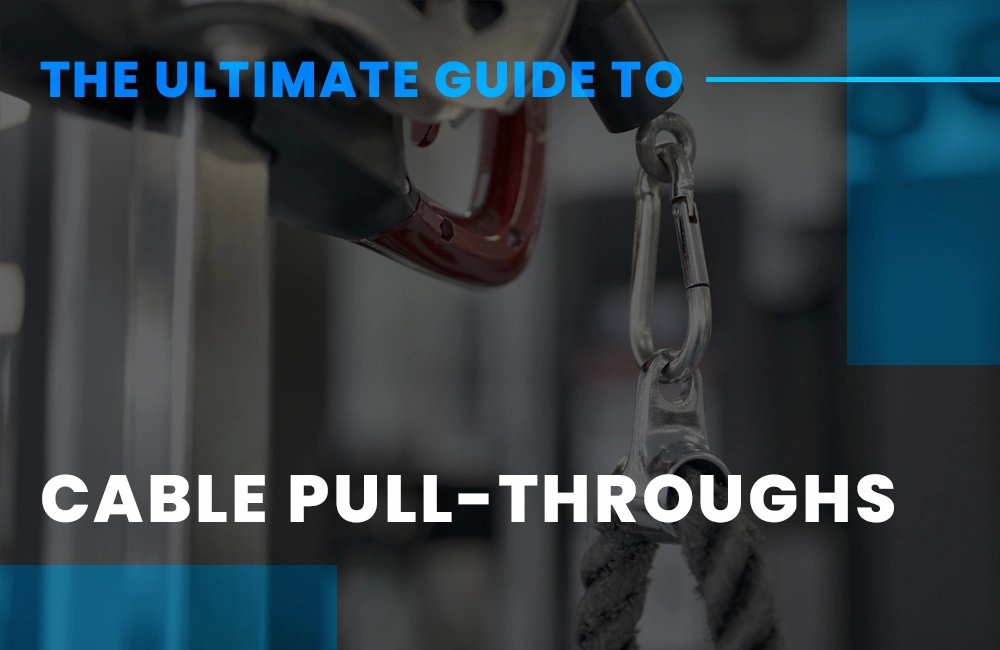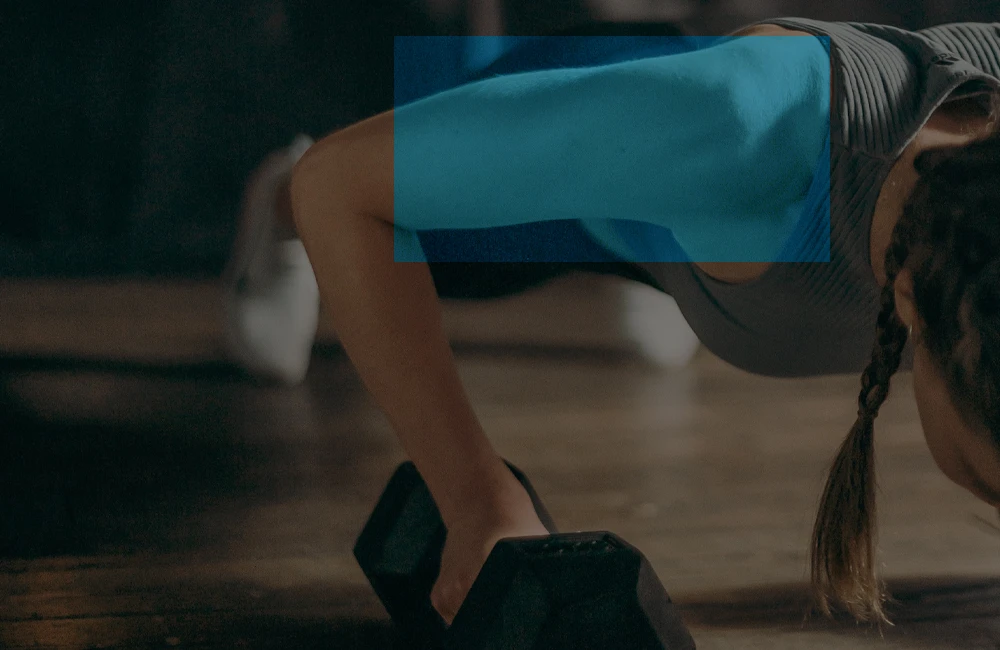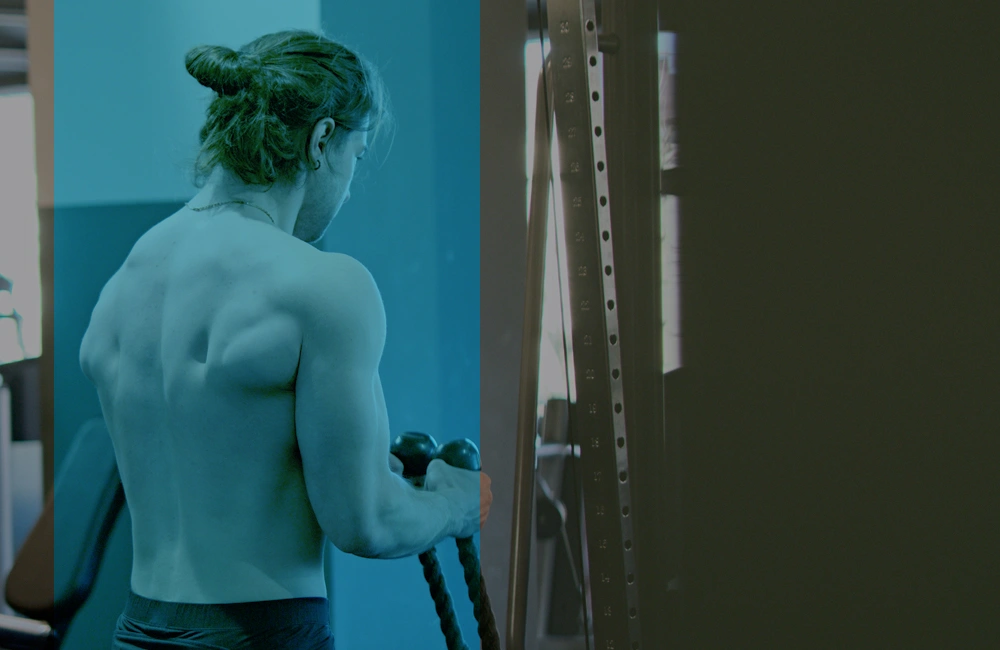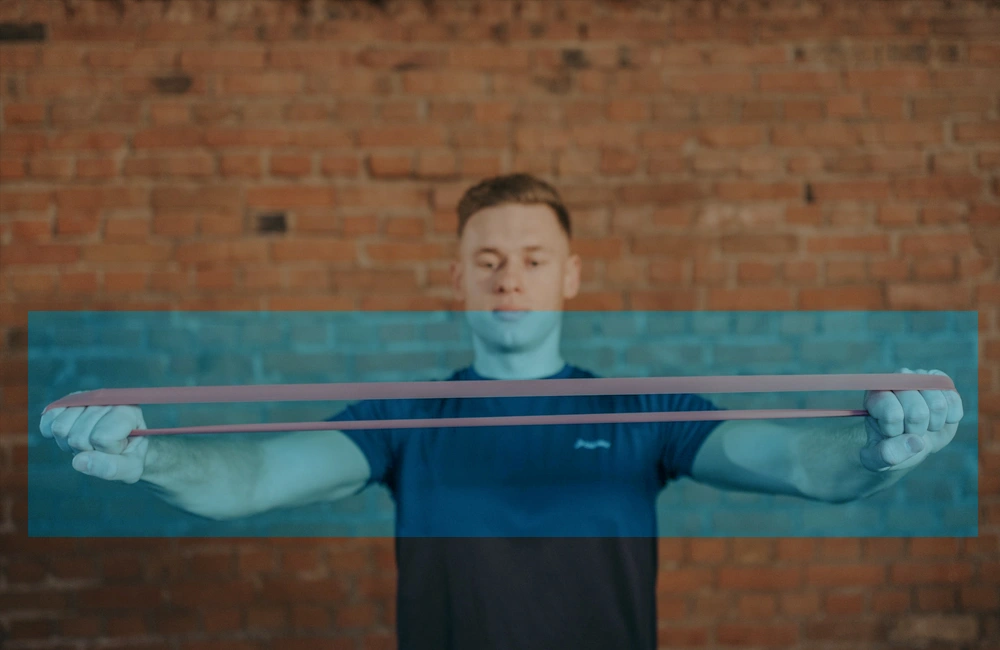The Ultimate Guide to Cable Pull Throughs for All Your Strength Training Needs
Table of Contents
What Are Cable Pull Throughs?
Cable pull throughs are cable-based exercises that focus on the muscles in the back of the body. Cable pull throughs have a similar effect on back muscles to that of deadlifts or stiff-legged deadlifts, which is why it’s one of my favorite exercises for targeting the lower back and posterior chain strength.
How To Perform Cable Pull-Throughs Correctly
Cable pull-throughs are a great way to build your lats and strengthen your core. They’re also a good option for those who want an exercise with less impact than deadlifts or squats and who still want to work their back and core.
Instructions on how to complete the cable pull through:
Listed below are step-by-step directions for pulling the wire through the wall (with rope).
- Attach a twin rope to a low cable pulley that is around knee height.
- Face away from the cable machine and grip the rope attachment with both hands between your knees, while keeping your back against the machine.
- Stand up and take a few steps away from the machine, being sure to place your feet firmly on the ground and keeping your arms as straight as you can. In order to maintain proper posture, you should keep your shoulders down and back.
- Hinge forward from the hips until your torso is parallel to the floor, keeping your knees slightly bent, core firm, and posterior engaged. The shins should be vertical or perpendicular to the ground, while the back should remain straight. You should be able to feel a decent stretch in your hamstrings, and the weight should be equally distributed across your feet.
- Exercise your glutes, then propel your hips forward and upward until you are in a standing posture, being careful not to overexert your lower back. Maintain a tight and flexed gluteal position.
- Complete the appropriate amount of repetitions by repeating the process.
5 Tips for Increasing the Difficulty of Cable Pull-Throughs
- Spend enough time warming up your shoulders before attempting these moves!
- If you’re performing these exercises for the first time, start with a weight that is manageable.
- When you feel good doing the exercise, increase the weight!
- The more repetitions you do, the more your body will strengthen.
- Check out this video on how to perform Cable Pull Throughs to get a more in-depth tutorial on how to do this advanced cable workout.
Different Exercises You Can Do With A Low Cable Pulley Machine or Gymnastics Rings
Low Cable Pulley machines are used for exercises that involve the hands and the forearms. The machine is advantageous because it provides users with a low-impact exercise routine even if they have physical limitations due to their age or injury history. Some of the exercises that can be done with a low cable pulley machine or gymnastics rings are below.
Exercises That Can Be Done With A Low Cable Pulley Machine Or Gymnastics Rings
One exercise you can do is called “Trapeze” where you hold onto the handles on either side of the machine and pull your body so that only your feet touch the ground. You can also do this exercise stationary by just holding on to one handle and leaning into it, then pulling yourself up so that only one foot touches the ground.
What do cable pull throughs work?
Cable pull-throughs are a great exercise that targets muscles in your back. The following are the muscles targeted by cable pull-throughs:
Latissimus Dorsi – The large muscle in the upper, outer part of your back.
Teres Major – An external rotator of the arm.
Pectoralis Minor – A small muscle deep in your chest cavity that attaches to ribs and helps with breathing.
Serratus Anterior – dragon pharma These muscles run along the ribcage and help keep the shoulder blades down and together.
Rhomboids Major & Minor – These muscles attach to vertebrae, ribs, and scapula to help you bend your neck forward.
Trapezius Muscle – This muscle is attached to your neck, shoulder blades, and spine
Low pulley cable pull throughs
This is when the individual grasps the barbell with an overhand grip, before placing it behind his neck in order to perform pull-ups.
There are many muscles in your upper body that are used during this exercise. The muscles involved in this exercise are pectoralis major, latissimus dorsi, trapezius, rhomboids, and biceps brachii. This exercise helps to strengthen and tone these muscles as well as improve posture and stability.
Benefits of low pulley cable pull throughs:
- Strengthening and toning of muscles
- Improved posture and stability
- Strengthening of the core
Cable pull-through (with a rope)
Exercises such as the cable pull-through (with a rope) are very useful for strengthening the hamstrings and glutes, which are positioned on the lower posterior chain, and also for creating appropriate hip mobility. In addition to being necessary for physical or athletic performance, these muscles are also helpful in shaping those pants!
This is a simple workout that anybody can do efficiently if they follow the appropriate form. The advantage of employing cables, on the other hand, is that they maintain consistent strain on the muscle, which is a vital component of muscular hypertrophy and growth.
Pull-throughs with a cable are a terrific addition to any exercise regimen, and they are suitable for lifters with varying degrees of expertise. So give it a go and see how much it helps you with your leg growth!
How effective are cable pull throughs?
Lower-body exercises such as the cable pull through are very beneficial to your overall health. It focuses on your hamstrings and glutes, which are two of the most often used muscle groups in the body, throughout the exercise. This exercise may be done without the need of any equipment, making it incredibly accessible to anybody who want to increase their muscular power in these critical areas.
Other Variations of the cable pull through
Resistance band pull through
The resistance band pull through is convenient since it does not need the use of a cable machine. This workout may be performed if you have resistance bands and a sturdy object on which to tie them to. It is important to note that the farther you stand from the anchor where the band is fastened, the more difficult the exercise will be.
It is also important to ensure that there is constant strain in the band, thus you will need to stand a sufficient distance away from the anchor to do this. If you are new to the exercise, we suggest beginning with a mild resistance band and gradually increasing the resistance as you gain experience. After a few sessions, you may raise the resistance or move farther away from the anchor if feasible. In order to enhance the difficulty of the resistance band pull through exercise by moving farther away from the item to which it is connected, you should designate the region where your feet will be while you are doing the pull through exercise.
Kettlebell swing
The kettlebell swing is one of the most extraordinary workouts that has ever been devised for human use. A proven exercise that strengthens your posterior chain and core, enhances explosiveness and hip activity, all of which are critical for maximum athletics, and boosts functional strength is literally there in front of your eyes.
Because it requires a rapid snap forward, it is very beneficial to the hamstrings, which will have a positive impact on your athletic performance.
Barbell hip thrust
Believe us when we claim that the barbell hip thrust is the finest glute builder there is, despite the fact that it is more of an alternative workout. In order to optimize strength and hypertrophy, you may load this exercise with a lot of weight. Additionally, research has shown that the hip thrust is a better workout since the weight needs to be overcome from the hips because the bar is exactly at the crease.
Conclusion
Exercises like the cable pull through (with rope) are recommended since they are not extremely taxing on the body and effectively target the lower posterior chain muscles in the lower back and hips. Just be sure to maintain proper technique while gradually increasing the resistance to get the most advantages from this exercise. In addition, use some of the variations and alternatives to help you increase your glute and hamstring development.



